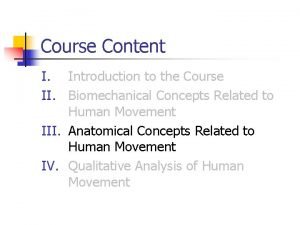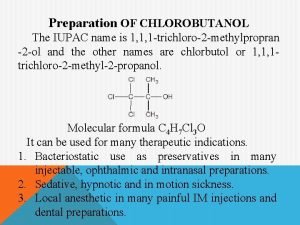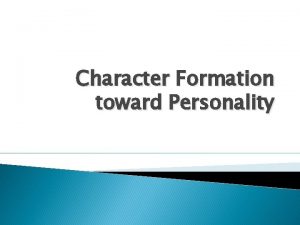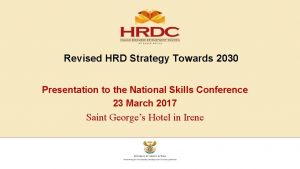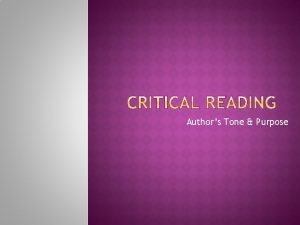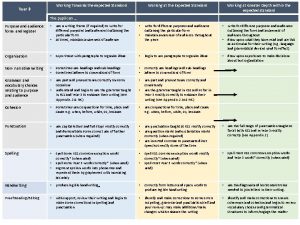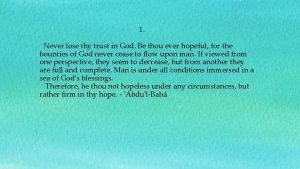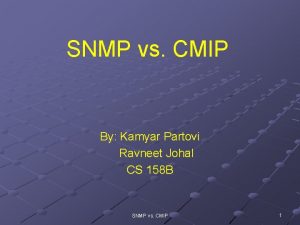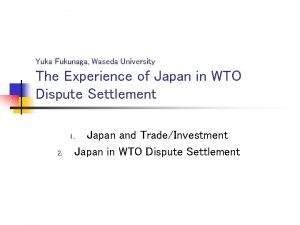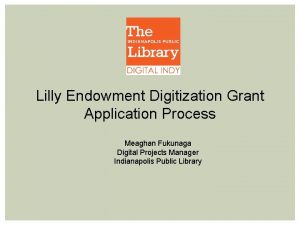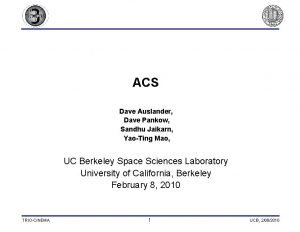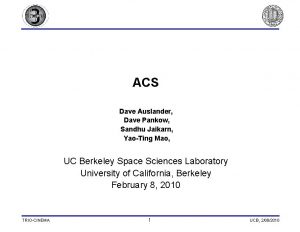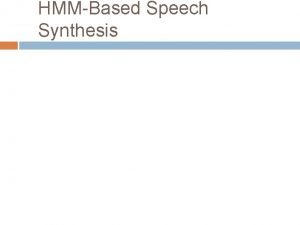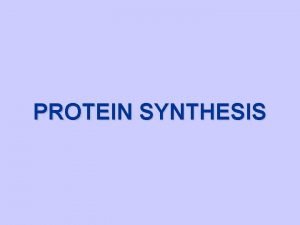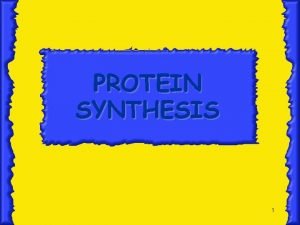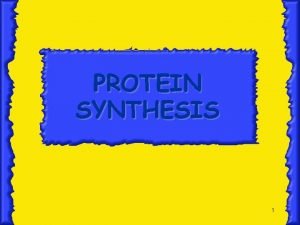Towards Practical Automated Motion Synthesis Auslander Fukunaga Partovi
















- Slides: 16

Towards Practical Automated Motion Synthesis Auslander, Fukunaga, Partovi, Christensen, Hsu, Reiss, Shuman, Marks, Ngo

Some New Goals • Improve initial algorithm (Marks and Ngo) – improve efficiency – allow user to influence motions • Composite motion synthesis – using a predefined library of controllers – concatenating controllers is complex • Going from 2 D to 3 D

Improving efficiency (Serial Search Algorithm) Initialize a set of random motion controllers Evaluate each motion controller in the set for i = 1 to number_of_iterations for each individual controller in the set do Mutate (i. e. , reinitialize or perturb) the controller Evaluate the new controller if the new controller is better that the old one then Replace the old controller with the new one end for if (i mod reseed_interval) = 0 then Rank order the set of controllers Replace bottom 50% of the set with top 50% end if end for – Works “like multiple hill climbers in parallel” – Reseeding “refocuses the search”

Effects of New Algorithm • Greater speed achieved – 3 -6 minutes on a single DEC work station – Greater focus of search • entire space of trajectories no longer considered • only space of possible motion controllers searched • Important to note: – Crossover breeding no longer used! – Mutations drive change

What Influences the Motion • Factors influencing motion – Primary fitness terms • term given the most weight in fitness function • usually rewards for net displacement • but artist cannot encourage specific tactics – e. g. , roll instead of walking – Sense-based motion controllers • Behavior based on sense variables alone • No notion of repetitive behavior

Influencing Minor Traits • Introduce secondary fitness terms – terms that encourage certain tactics • Using time-based motion controllers – make time-taken a factor in determining moves

Secondary Fitness Terms • Term in with less weight than primary term – “determines minor characteristics of motion” Max_cm_height - maximum height of center of mass during motion slip_sum - Distance traveled by body parts in continuous contact with ground rotations - Number of full-body rotations during motion • Terms encourage certain trait in motion – e. g. , shuffling, gyrations, hopping

Time-based Motion Controllers • All sense variables reduced to one: time – easier to code – easier to compute one • Simulation broken into time segments – Apply SR rules within segments – Cannot perform moves that take longer than given time segment allows – Repeat segments • Size of segments determines motion – can control (a)periodicity of motions – e. g, Shuffling vs. tumbling of Beryl Biped

Composite Motion Synthesis • Allowing animator to concatenate motion controllers using an animation editor • Easier than earlier approaches – using pre-made motion controllers – no SC problems to solve in animation editor • Major challenges exist – starting a motion controller from an initial configuration it was not designed for

Different Starting Configurations • Simple animation editor created • Sense-based BSR controllers are robust – only similar initial configuration needed for simple motions – human selection of alternate transition points • requires solid understanding of controllers available • care needed - BSR controllers are only so robust • tedious work • Automated transition point selection needed

Automated Transition Point Selection • Three techniques used – Create more robust motion controllers • randomly perturb initial configurations of articulated figures during each iteration of motion synthesis – Using a composite-motion scripting language • quantifying each phase of composite motion • interpreter translates characteristics into fitness function for optimization – Heuristic search for best transition pt. • Greedy best first search for local optimum for random initial set of transition points.

Going from 2 D to 3 D • Increased complexity – Dimensionality of controller space doubles – Much of controller search space now causes loss of balance • Type of controllers used – time-based • performed better than expected – sense-based

Time-based Controllers in 3 D • worked faster than sense-based controllers – easier to solve smaller, easier time problems • proved fitter - faster learning curve • certain limitations surface – unstable 3 D figures prove hard to implement – harder to concatenate time-based controllers

Sense-based Controllers in 3 D • Take longer, but show no limitations • Increased complexity – All vectors now 3 D – New rules desirable in 3 D simulation • Better mutation algorithm needed • Better initial setup needed

Better Mutation Algorithm • Greater complexity, larger controller space • Better heuristics needed in mutations – purely random mutations unlikely to have an effect in incredibly large controller space – aggressive relevence heuristics needed to create random regions that guarantee an effect – new heuristics demand that sensitive region now share some points with old sense space trajectory

Better initial setup needed • Three rounds of mutations conducted on initial set of motion controllers • Low pass filter on values of physical senses – remove noise – remove high-frequency variation
 Fukunaga
Fukunaga Automated array synthesis
Automated array synthesis To prepare chlorobutanol from acetone and chloroform
To prepare chlorobutanol from acetone and chloroform Simple harmonic motion formulas
Simple harmonic motion formulas Chapter 2 section 1 describing motion answer key
Chapter 2 section 1 describing motion answer key An object in motion stays in motion
An object in motion stays in motion Describing motion lesson 1 answer key
Describing motion lesson 1 answer key Chapter 2 section 1 describing motion answer key
Chapter 2 section 1 describing motion answer key Section 1 describing motion
Section 1 describing motion Types of motion
Types of motion Describing and measuring motion
Describing and measuring motion Character formation examples
Character formation examples E hrdsa
E hrdsa Authors attitude
Authors attitude Moving towards digitalization
Moving towards digitalization Working towards the expected standard meaning
Working towards the expected standard meaning O thou who art turning thy face
O thou who art turning thy face
